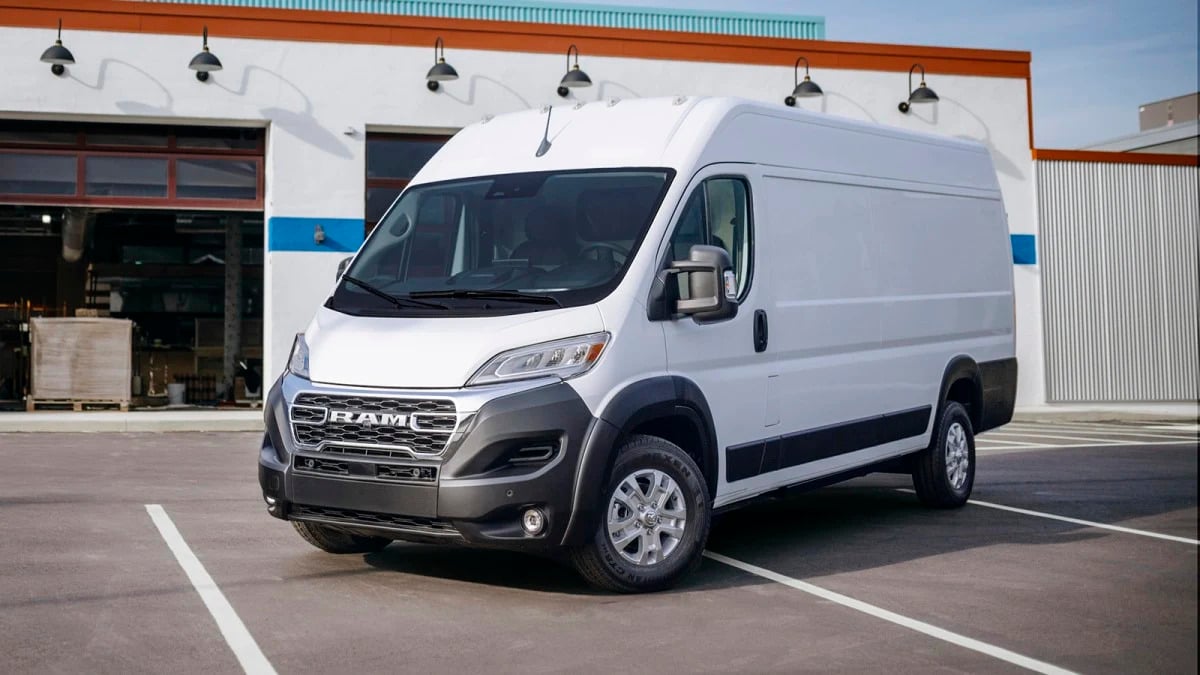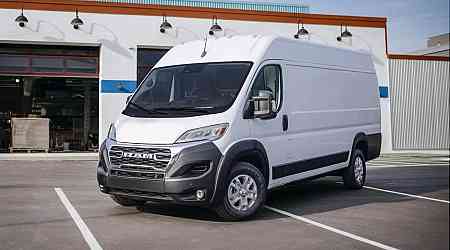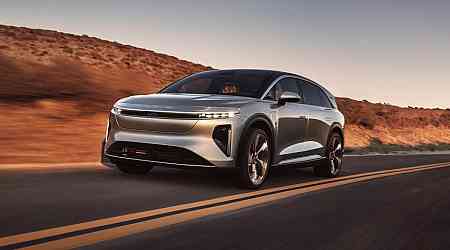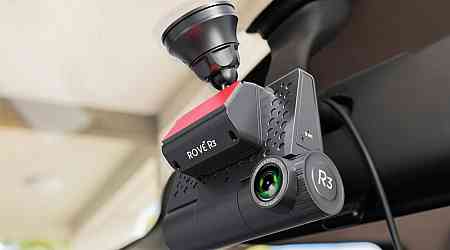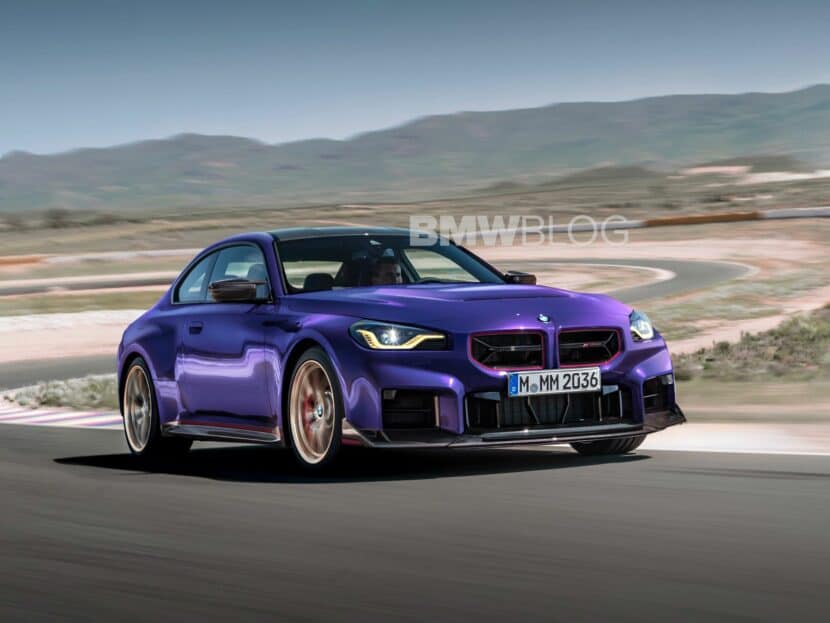As important as it is to get more electric options to regular consumers, the “mass market” is still only a portion of the vehicles on the road. Commercial vehicles, including vans and trucks, are sold in staggering numbers, many of which spend much of their time around town, running goods and equipment to local homes and businesses. Those are the least efficient routes you can pick for an internal combustion vehicle, which is bad for both the bottom line and the environment. Going electric therefore makes a lot of sense, but to date, the only electric commercial van was the Ford E-Transit. Well, it’s now being joined by the Ram ProMaster EV. It’s easily the nicest version to drive, and has specs that could make it a tempting alternative to the Ford. “Tempting” is not the same as “good,” however, as the Promaster EV is simply priced too high.
The Ram ProMaster EV is not actually the first version of this van to be electrified. You see, the ProMaster is but one badge-engineered take on a commercial vehicle available throughout the Stellantis empire. In fact, way back in 2020, Peugeot was the first to reveal an electric version of what it calls the Boxer (the E-Boxer), while the Fiat E-Ducato debuted a few years after. They are not all the same, however. Of the two vans, the ProMaster EV mirrors the Peugeot with a higher-output motor under the snub nose powering the front wheels. It produces 268 horsepower and 302 pound-feet of torque. That’s only down 8 hp to the Pentastar V6-powered ProMaster, and up 50 pound-feet of torque. That output is also right in line with the Ford, which sits at 266 horsepower and 317 pound-feet of torque, though the Ford sends its power to the rear wheels rather than the front. Something to consider for those in the Snow Belt.
Backing the ProMaster’s motor is 110-kilowatt-hours of battery capacity, which is also the same as the Peugeot. It’s the sole battery option, and Ram is targeting a maximum city range of 174 miles, though it said it expects a little more than 160 miles with the van loaded to half its payload capacity. Range estimates are also based on American test cycles (the Peugeot and Fiat quote the extremely optimistic WLTP test methodology, so there’s no accurate comparison to be had). More importantly, the ProMaster EV tops the Ford’s 89-kWh battery pack and maximum range estimate of 159 miles for the low-roof cargo van.

Maximum fast-charging speed is 150 kilowatts, but it seems more likely that businesses would recharge in the evening. (If they routinely need more than the ProMaster EV’s stated range in a day, an EV probably isn’t the best bet at this time.) As such, it is capable of 11-kW Level 2 AC charging, which is what you can expect from the typical “home” charger.
There will be two versions of the ProMaster EV available. The delivery van, which will be the first, is a high-roof van that differs mainly in the addition of a roll-up rear cargo door, and a sliding pocket door behind the front passenger door. These are added to provide easy ingress and egress to the cargo area without requiring clearance to open doors. The other, more conventional cargo van variant coming later next year is also a high-roof van, but with more typical split rear doors and a normal sliding van door behind the passenger door. Perhaps the biggest difference between the two is payload: 2,030 pounds for the delivery van and 3,020 for the cargo van. For comparison sake, cargo E-Transits range from 2,799 to 3,249 pounds, depending on wheelbase and roof height, and the chassis-cab and cutaway models are rated higher (though that’s also to accommodate whatever custom box would be fitted). Ram claims up to 524 cubic feet of space, though it didn’t specify whether it was the delivery or cargo model, versus up to 536 cubic feet with Ford’s high-roof E-Transit. It should also be said that the ProMaster has the exact same cargo capacity as the gas-powered version since the battery pack is under the floor.
That’s enough numbers, though, it’s time to touch on how the ProMaster EV drives. We haven’t actually had the opportunity to drive the E-Transit, so we can’t compare them, but we were able to drive both the gas and electric ProMasters back-to-back. The EV is unquestionably the way to go if you can work with the range and charging needs. While the Pentastar and its nine-speed automatic are reasonably smooth, you can’t beat an electric motor with a single speed. The more immediate response from the throttle made the van feel far quicker and easier to punt around. Tackling on-ramps was also more pleasant without the accompanying furious thrumming of the V6. This particular example was electronically capped to 70 mph, but it would happily do more, which was confirmed by Ram representatives. Ram also notes that there is a one-pedal driving mode for the EV, but it was not enabled on our test vehicle.



The rest of the experience (we only had access to the delivery model) was virtually identical to the combustion ProMaster, which is to say that it’s very much a commercial van. Being just a huge metal box, it is echo-y and a bit rattly. The short nose and seating placed almost right over the front wheels can only be approximated by a bus, especially with the relatively horizontal steering wheel. With the enormous windshield, forward visibility is phenomenal. There’s also plenty of room in basically every direction, and it's pretty easy to find a comfortable seating position. It feels very different from most passenger vehicles, which is novel and fun for someone less familiar with commercial vehicles, and probably not at all interesting for delivery drivers.
It has solid infotainment featuring with a 7-inch instrument screen and 10.1-inch center screen. And it can be equipped with a heated steering wheel, heated windshield, adaptive cruise control with lane-centering, blind-spot warning, and wireless phone charging. The blind-spot warning seems like a must for such an enormous vehicle with no rear windows, as does, surprisingly, the heated windshield. Trying to defog that huge windshield with the HVAC system is not going to be efficient, so having embedded heaters should be beneficial for range.
So far so good for the ProMaster EV, but as mentioned earlier, the price is the sticking point. Although the cargo version’s pricing is still to come, the delivery model starts at $79,990. The E-Transit cargo van starts at around $52,000, and the chassis-cabs and cutaways start at lower prices. Now, hypothetically, there’s a strong chance the delivery configuration will cover any custom upfitting that customers might have to add to a chassis-cab or cutaway, but that’s still a steep price for a commercial van.
So the ProMaster EV is definitely the best ProMaster to drive. And reduced fuel and likely maintenance costs are appealing to businesses, not to mention the environmental benefits. But the price makes for a barrier that could slow adoption. We’re hoping the cargo model’s price gets close to the Ford’s, because more electric vans are good for everyone.


















